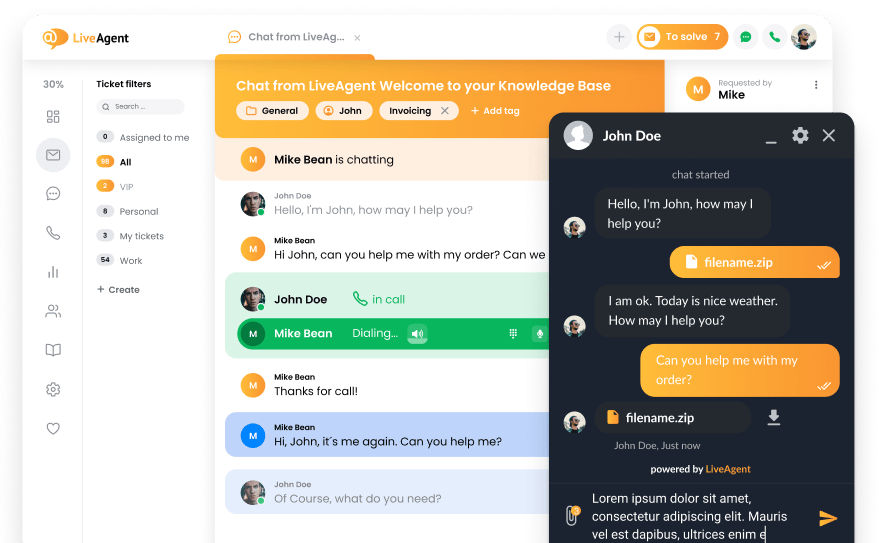What is user error?
Issues that arise on the user’s end are called user errors. If the software works correctly without a bug in system settings or other defects in a computer program, there is a chance that the user is not working with the software as it was intended.
If you encounter a user error on your side, try troubleshooting, or you can jump right in and contact customer support professionals. If you suspect your code can be buggy, you should again test and review it to find the source of your troubles.
User error is a prevalent term in the domain of human-computer interaction (HCI) and digital systems, often used humorously or pejoratively to describe mistakes made by users rather than system malfunctions. Understanding user error is crucial not only for designing user-friendly systems but also for preventing errors and enhancing the overall user experience. In HCI, user errors are typically categorized as slips, mistakes, and lapses, and they can provide valuable insights into the design process and user needs.
User Error Definition
User error refers to mistakes made by users when interacting with a computer system or digital interface. Unlike system errors, which are caused by faults in the software or hardware, user errors stem from incorrect actions or decisions made by the user. These errors can lead to outcomes ranging from minor inconveniences to significant system failures. A deeper understanding of user errors involves analyzing the cognitive processes and environmental factors that contribute to these errors.
Types of User Errors
- Slips: Slips occur when a user intends to perform one action but accidentally performs another. This is often due to distractions or operating on “autopilot.” In HCI, slips are considered execution errors, where the user’s intention is correct, but the action does not align with that intention.
- Mistakes: Mistakes involve incorrect planning or assumptions, where the user’s goal is inappropriate for the task at hand. These often arise from misunderstanding the system or having incorrect information. Mistakes are classified as planning errors, where the user’s mental model of the system is flawed.
- Lapses: Lapses are errors caused by memory failures, leading to missed actions or forgotten steps. These are often due to interruptions or multitasking and are considered memory-based errors.
- Violations: These occur when users intentionally deviate from standard operating procedures or rules, often due to frustration or perceived inefficiencies in the system. Violations can be a result of user dissatisfaction with the system design or workflow.
Common Examples of User Errors
- Data Entry Errors: Typing an incorrect email address or phone number can be categorized as a slip, where the intention was correct, but the execution was flawed.
- Navigation Errors: Clicking the wrong link due to similar-looking buttons or unclear labels is often a result of poor interface design that does not cater to intuitive user navigation.
- Configuration Errors: Incorrectly setting up privacy settings, leading to unintended data exposure, can be a mistake arising from misunderstanding the system’s feedback or options.
- Misinterpretation Errors: Misunderstanding icons or instructions, leading to incorrect actions, highlights the importance of clear and consistent design elements.
Causes of User Errors
User errors can be attributed to several factors, including:
- High Cognitive Load: Overloading users with too much information or complex tasks increases the likelihood of errors. Systems should aim to minimize unnecessary cognitive load to facilitate smoother interactions.
- Design Complexity: Confusing layouts or workflows can lead users to make mistakes. Simplifying design and enhancing usability are key strategies for reducing complexity.
- Lack of Feedback: Inadequate error messages or notifications can prevent users from recognizing and correcting errors. Effective feedback mechanisms guide users and reduce uncertainty.
- External Distractions: Interruptions or multitasking can impair focus and increase error rates. Designing systems that allow for easy resumption of tasks can mitigate the impact of distractions.
- Insufficient Training: Lack of proper onboarding or user education can lead to misunderstandings and errors. Continuous learning opportunities and accessible support channels are essential.
Preventing User Errors
Designing systems to minimize user errors involves several strategies:
Clear and Intuitive Interface Design
Employing principles from interaction design, such as affordances and signifiers, can help guide users toward correct actions and reduce errors. For example, using universally recognized icons for actions like deleting (e.g., a trash can icon) can help users understand functionality without confusion. Consistently applying these principles across different platforms and devices can enhance user familiarity and confidence.
Effective Onboarding
Providing comprehensive onboarding experiences that include tutorials, tooltips, and contextual help can bridge the knowledge gap for new users, reducing the likelihood of errors due to unfamiliarity with the system. Tailored onboarding that adapts to user proficiency levels can further enhance learning and retention.
Thoughtful Information Architecture
Organizing content logically and hierarchically allows users to navigate systems more easily and avoid errors. For example, categorizing products clearly in an eCommerce site helps users find what they need without confusion. Information architecture should be designed with user tasks and goals in mind, ensuring that navigation paths are intuitive and efficient.
Error Prevention Mechanisms
Implementing validation checks, error messages, and confirmations can alert users to potential mistakes before they cause problems. For example, prompting users to confirm before deleting important data can prevent accidental data loss. Error prevention strategies should focus on providing actionable feedback and clear instructions to guide users towards correct actions.
Consistent Design Patterns
Using consistent design patterns across different parts of a system helps users build familiarity, reducing cognitive load and the chance of errors. For instance, maintaining a consistent layout for navigation menus ensures users can easily find their way around. Consistency in design also reinforces user trust and reliability in the system.
User-Friendly Form Design
Optimizing form fields with clear labels, instructions, and input validation can help users enter information accurately. For example, using real-time feedback for form validation can guide users to correct errors as they type. Designing forms with user needs and context in mind can enhance usability and reduce frustration.
Progressive Disclosure
Revealing information gradually based on user context can prevent overwhelming users and reduce errors due to information overload. For example, hiding advanced settings by default and only revealing them when necessary can simplify user interactions. Progressive disclosure should be used to prioritize essential information and actions, ensuring that users can focus on their primary tasks.
Detecting User Errors
Error Logging and Analytics
Using error-monitoring tools to gather data on user errors can help identify patterns and root causes, allowing design teams to implement corrective measures. Analytics can provide insights into user behavior and highlight areas for improvement in system design and functionality.
User Feedback and Support Channels
Encouraging users to provide feedback through dedicated channels can help organizations identify errors and user pain points, leading to improvements in the system. Support channels should be easily accessible and responsive, providing users with timely assistance and solutions.
Learning from User Errors
Analyzing user errors provides valuable insights into system weaknesses, user behavior, and potential improvements. This feedback can inform future design iterations, training programs, and error management strategies. Continuous learning from user errors ensures that systems evolve to meet user needs and expectations, enhancing overall user satisfaction and success.
Frequently Asked Questions
What is a user error?
User error is a human error in a computer system when interacting with it.
How to detect a user error?
User error can be detected by tracking software as well as by analyzing your knowledge of what the user has done.
What is the best way you approach user errors?
The best approach to user error is that it happened for a specific reason, and you can easily solve the problem by analyzing what the user did.
After learning about user error, consider diving into Customer Support Mistakes You Probably Make to understand common pitfalls and how to fix them. Enhancing your support skills is crucial for a seamless experience, so explore strategies to improve customer service further.
For maintaining security, the Help Desk Security article provides valuable insights into keeping customer data safe. Discover how these features can enhance your overall service quality.
Lastly, if you're interested in making your service more efficient, check out Automated Customer Service. This guide covers how automation can streamline your processes and boost customer satisfaction.
Discover effective troubleshooting techniques for hardware and software issues in customer support. Learn how diagnostic tools, communication skills, and new technologies like AI enhance problem-solving to ensure customer satisfaction. Explore common challenges and systematic approaches for efficient resolutions. Visit now to elevate your troubleshooting game!
Customer service policy templates
Create effective customer service policies with LiveAgent's templates. Boost customer loyalty with clear, professional guidelines.
Discover how LiveAgent's time tracking feature can enhance productivity and efficiency for your team. Monitor ticket resolution times, optimize workflows, and boost performance with seamless TimeCamp integrations and comprehensive employee monitoring. Start your free trial today and streamline your customer support operations effortlessly!

 Български
Български  Čeština
Čeština  Dansk
Dansk  Deutsch
Deutsch  Eesti
Eesti  Español
Español  Français
Français  Ελληνικα
Ελληνικα  Hrvatski
Hrvatski  Italiano
Italiano  Latviešu
Latviešu  Lietuviškai
Lietuviškai  Magyar
Magyar  Nederlands
Nederlands  Norsk bokmål
Norsk bokmål  Polski
Polski  Română
Română  Русский
Русский  Slovenčina
Slovenčina  Slovenščina
Slovenščina  简体中文
简体中文  Tagalog
Tagalog  Tiếng Việt
Tiếng Việt  العربية
العربية  Português
Português 







